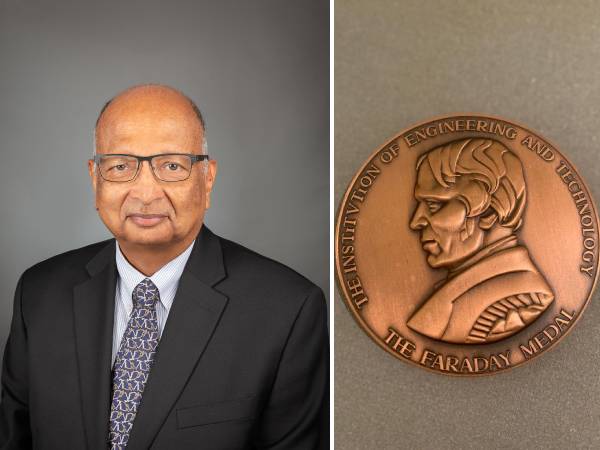
October 23, 2023: The Institution of Engineering and Technology (IET), UK,has awarded the 2023 Faraday Medal to Stanford University Professor Emeritus and Celesta Capital Advisor Arogyaswami Paulraj. Awarded.
Dr. Paulraj became the 100th recipient of the medal, with his citation reading, "For the invention, advancement, and commercialization of MIMO Wireless." The Faraday Medal is one of the world's most prestigious awards for engineers and scientists who advance technologies with global impact.
MIMO (Multiple In, Multiple Out) wireless technology powers 4G, 5G mobile, and WiFi networks, with far-reaching impact including the revolution of high-speed wireless access, connecting 6.5 billion smartphone users and another 12 billion personal and machine-type devices to the internet. The ubiquitous broadband wireless connection to the internet would not be possible without MIMO. According to the mobile and WiFi industry groups, the global economic value of MIMO-powered wireless networks was US $7.6 trillion in 2022. MIMO uses multiple antennas at the transmitter and receiver in a wireless link, along with signal encoding at the transmitter and decoding at the receiver, to boost wireless data rates. Thousands of researchers and engineers in the US, China, and Europe advanced MIMO, noted by more than 400,000 research publications and 450,000 patents. First awarded in 1922 to Oliver Heaviside, the Faraday Medal is the longest-standing global recognition in science and technology. Named after Michael Faraday, the father of electromagnetism, early medalists included J.J. Thompson (discovery of the electron) and E. Rutherford (discovery of the atomic nucleus). More technology-focused winners include V. Zworykin (television) and R. N. Noyce (semiconductors). In recent years, the award has also recognized business leaders, and honored Wipro founder Mr. Azim Premji from India.
Paulraj holds 79 patents and has won several global distinctions. These include both the two top global honors for telecom pioneers – the 2011 IEEE Alexander Graham Bell Medal and 2014 Marconi Prize and Fellowship. Paulraj’s recognitions in India include the Padma Bhushan in 2010.
This week's IET Faraday medal makes Paulraj a rare individual to receive all three top global awards for electronics /telecom engineering.
Commenting on the honor, Dr. Paulraj said, “I am extremely honored to be awarded with the IET Faraday Medal. I believe digital access is truly an equalizer in terms of opportunity creation, and with 5G, India clearly has the potential to enter and succeed in deep technology industries. Since almost all the value addition in these industries comes from innovation and IP ownership, the industry has many barriers to entry. Going forward, India must thoroughly understand all the industry dynamics to frame a successful path.”
From a Naval officer to a Stanford professor
Currently an emeritus professor at Stanford, Dr. Paulraj has received many global honors for his contributions to MIMO technology. He serves as a Senior Advisor to Celesta Capital, a Silicon Valley-headquartered venture capital firm focused on deep tech within the India – U.S. corridor. Dr. Paulraj serves on several advisory committees across the India and US R&D ecosystem, including serving as the Fabless Committee Chair with the Indian Semiconductor Mission.
Born in Pollachi, Tamil Nadu, India, in 1944, Paulraj joined the Indian Navy at age 16 and was commissioned in 1965. He served for 25 years before moving to Stanford University. His contributions from that period included well-known mathematical breakthroughs for signal estimation and high-resolution parameter estimation. He also led two successful projects in India to develop anti-submarine sonar systems. Notably, the APSOH sonar, developed between 1977 and 1983, was perhaps the world's most advanced sonar system and India’s most successful military technology achievement from that period.
Dr. Paulraj also founded / cofounded three national laboratories in India, spanning AI and robotics, military electronics, and high-performance computing. But circumstances led him to leave India in 1991 and join Stanford University. Paulraj invented the MIMO technique in 1992 while working on a DARPA project for US defence.